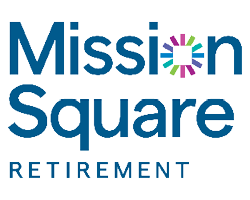By Brian Levy and Shui-Yan Tang
Every night, nearly 50,000 people sleep unsheltered on the streets of Los Angeles County. While the number has declined over the past two years, LA continues to be the epicenter of the U.S. homelessness crisis—exhibit number one for a broader critique of progressive governance. However, over the past year a largely unheralded set of innovative governance reforms have taken shape.
Homelessness has multiple causes, and thus calls for a multi-sectoral, multi-jurisdictional and multistakeholder response. Los Angeles’s efforts to mount a multi-faceted response have been complicated by the fragmentation of the region’s governance institutions. Some tasks are the responsibility of the LA County government, and others are diffused among the county’s 88 municipalities, of which the City of Los Angeles (with a population of four million) is the largest. The need for public engagement in advance of any action further complicates decision-making.
The popularly elected Los Angeles County Board of Supervisors has acted boldly to address these challenges by adopting a series of recommendations proposed by the county-appointed Blue Ribbon Commission on Homelessness Governance. Some of the reforms aim to bring more top-down coherence to how hierarchical authority is exercised. Others aim to foster greater horizontal alignment across jurisdictions and service providers. (Alongside the county reforms an additional initiative, the LA County Affordable Housing Solutions Agency, was established via state-level authorizing legislation and began its work in 2023; it is outside the scope of this article.)
In our view, these governance reforms are both unusually innovative and potentially transformative. While the top-down reforms are moving forward at breakneck speed, progress vis-à-vis the horizontal reforms has been more uneven. Yet, because the top-down and horizontal reforms are mutually-reinforcing, their potential will only be realized if both sets move forward together.
The most far-reaching initiative has been the LA County Board of Supervisors’ decision in early 2025 to create a new, consolidated county-level homeless services agency, financed in part by clawing back direct control of over $300 million previously channeled to homelessness service providers via the Los Angeles Homeless Services Authority (LAHSA), jointly governed by LA County and the City of Los Angeles, and long perceived as a lead agency responsible for addressing homelessness. The decision to create the new county department was made both to coordinate LA County’s homelessness programs under one consolidated entity, and to respond to longstanding dissatisfaction with LAHSA’s perceived lack of effectiveness, accountability, and transparency.
The new county department, the Los Angeles County Department of Homeless Services and Housing, is scheduled to open on January 1, 2026. Upon start-up, it is likely to be the first among equals as the LA region’s pre-eminent public homeless services agency. Indeed, even before the agency opens, its newly appointed chief executive has been drawing attention to an impending budget crunch across the Los Angeles region, and thus the urgency of rethinking regional funding priorities for homeless services.
The new agency will, to be sure, confront the “teething” problems that invariably accompany organizational restructuring, including the realignment of hundreds of LAHSA contracts with non-profit service providers and decisions on how the residual functions and financial resources remaining in LAHSA will be deployed. But the vigorous start-up work currently underway suggests that these teething problems will be short-lived.
But the risks associated with the new agency aren’t only internal. Paradoxically, a large new player brings with it the risk that balkanization might worsen. One can readily imagine a scenario in which, rather than embracing the possibilities of the new institutional environment, many of the multiple public and non-profit agencies working to address homelessness outside the umbrella of the new county department could become pre-occupied with fending for themselves.
This brings us to the second, “horizontal,” set of governance reforms. Though less high-profile than the creation of a new county department, these reforms are both innovative and critical to counter inter-governmental in-fighting. They were set in motion in late 2023 when the County Board of Supervisors approved the creation of two new multistakeholder bodies to support better alignment of approaches to homelessness across the LA region—an Executive Committee for Regional Homeless Alignment and a Leadership Table.
The county-wide adoption earlier this year of a set of top-line goals for reducing homelessness formulated by the two bodies points to their potential. In a fragmented governance environment like LA’s—and for a multi-faceted problem such as homelessness—goal clarification is a vital early step. Clear goals serve as a point of reference for setting priorities, making difficult choices, and enhancing civic accountability. The new top-line goals provide a hitherto missing north star for work on homelessness across the LA region.
Having achieved a major success in shaping the region’s vision of where they want to go, the question remains: can these bodies move from vision to action, and enhance alignment at the micro, intermediate, and systemic levels?
At the micro-level, building on pre-existing platforms for information-sharing, there has been an impressively determined effort, led by the Executive Committee with involvement by a wide range of public and non-profit service providers, to craft a common set of service standards. Detailed harmonized standards have already been drafted for outreach services and for the provision of interim and permanent supportive housing. The standards will help clarify what is expected of individual service providers and, more broadly, help improve coordination of homeless services across jurisdictions.
The intermediate level is where strategic questions of effectiveness (“Are you doing the right things?”) are best addressed, and thus where transformational gains in the region’s efforts to reduce homelessness are possible. Achieving these gains calls for strategic prioritization (e.g., “Does the region have the right balance between allocating resources to preventing chronic homelessness versus helping to house people who have been chronically homeless? Do some innovative programs by non-profits warrant more support than they currently are getting?). It also calls for identifying and alleviating binding constraints that hinder system performance (e.g., how to increase the supply of affordable housing for the poorest in society). Questions along these lines have heightened urgency in the face of the looming federal budget cuts that will simultaneously add to homelessness and sharply reduce available resources. As noted, the leadership of the new county homeless services agency is already being pro-active in sounding the alarm – but even an empowered new agency cannot proceed alone.
Strategic prioritization requires a champion and detailed technical work, but it also requires something more: a collective will to look beyond parochial interests and reallocate resources across tasks, and across organizational and political stovepipes. The Executive Committee’s composition (high-level political representation from the county, the various municipalities, and the state of California) makes it the natural focal point for addressing questions along these lines. But it can be difficult for political leaders, who have to be responsive to the concerns of their direct constituents, to take a broad view; their preference might be to finesse difficult strategic questions. This is where the distinctive insider-outsider positioning of the Leadership Table potentially comes into its own.
The Leadership Table’s establishment was a culmination of years of advocacy from civil society, plus a commitment to enhance accountability that accompanied voter approval of a 2024 ballot initiative to provide over $1 billion annually (via an increase in the county sales tax) to address homelessness. For reasons we lay out below, in our view it comprises a crucial and unusually innovative—and thus also under-appreciated and potentially vulnerable—part of the overall emerging LA architecture for governing homelessness.
On the surface, the configuration and mission of the Leadership Table is similar to that of the Executive Committee: Both are advisory bodies, with no direct line responsibility; both have a mandate to enhance collaboration across jurisdictions and across agencies. However, as their composition signals, the two bodies differ radically from each other in how they might add value.
The Leadership Table assembles a very different set of stakeholders from the Executive Committee. The Executive Committee is a natural outgrowth of the classic model of representative democracy; it brings together elected leaders that have line authority over their respective line bureaucracies. In contrast, the Leadership Table’s membership comprises a combination of community representatives and senior administrative professionals from a range of public agencies (some LA County, others LA City and other municipalities). This “insider-outsider” composition potentially enables it to add value in two distinctive ways: it incorporates the “front-line” perspective of implementers and their clients, and it narrows more broadly the gap between the public bureaucracy and civil society. (Further, it potentially does these things within a systematic, structured institutional arrangement, one radically different from the all-too-familiar ad hoc, performative and often enormously time-consuming public engagement processes used in the past.)
Working together, the Leadership Table and Executive Committee have the potential to be powerfully synergistic in fostering credible joint actions across the range of public, non-profit and private organizations that are trying to address homelessness. The members of the Executive Committee bring the authority needed to break hierarchical “stovepipes.” As a supportive—but sometimes critical—ally, the Leadership Table is well positioned to use moral suasion to continually nudge various players to loosen the grip of parochial interests and sustain a collective focus on reducing homelessness and, more broadly, to help build confidence among citizens that public resources earmarked for homelessness are being used effectively.
How well, then, do the new governance reform pieces fit together? Considering the entire package, our tentative conclusion is that, given the progress so far, the reforms have the potential for landmark progress but only if momentum can be sustained across their full range.
The new consolidated county-level homelessness department seems certain to take root, given both the power of its sponsor and the momentum it already is demonstrating – and because there is a seductive simplicity in responding to crises by strengthening top-down control. By contrast, the cross-cutting bodies (especially the Leadership Table) lack any obvious and established champion. Both the Executive Committee and Leadership Table are making impressive progress in clarifying and consolidating their roles going forward. Nonetheless, the risk remains that the painstakingly constructed shared vision that led to their emergence could all-too-easily be washed away by the crises (and parochial interests) of the moment.
But what emerged was not created on a whim but was the fruit of years of effort, an ongoing search by civil society activists and reformers within government for a way forward that reconciles the need for a coherent approach with LA’s fragmented governance realities. The resulting governance arrangements have the potential to become a potent platform for problem-focused governance, one capable of integrating hierarchical and horizontal efforts in a way that enhances both effectiveness and democratic legitimacy. Their emergence is a potent example of the resilience and creativity that, sometimes, characterize the LA region. They are an asset to be protected, cultivated, and given the opportunity to flourish. What happens next matters not only to the Los Angeles region but may also inform and offer inspiration to other large metropolitan areas seeking to reconfigure governance to combat homelessness and other “wicked” problems.
Brian Levy currently teaches at UCLA’s Luskin School of Public Affairs; he spent more than two decades working on governance reforms at the World Bank.
Shui-Yan Tang is Duggan Professor in Public Administration at USC’s Sol Price School of Public Policy.



